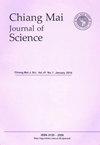互联自动驾驶车辆的排成策略和排规模对混合交通容量的影响
IF 0.6
4区 综合性期刊
Q3 MULTIDISCIPLINARY SCIENCES
引用次数: 0
摘要
最近的技术发展使车辆队列可以安全地相互靠近行驶,从而提高了道路的利用率,减少了空气阻力,从而节省了大量能源。相互紧跟的车辆队列被称为车辆排。在互联自动驾驶车辆(CAV)排队列的早期阶段,CAV 预计会根据适当的排队列政策在出发点形成排队。然而,人们很少考虑排成政策对交通容量的影响。本文分析了CAV、自动驾驶车辆和人类驾驶车辆混合交通流中,排的形成策略和排的规模对交通容量的影响。首先,在给定排规模分布的情况下,我们推导出任意 CAV 在排内位置的概率质量函数,并得出混合交通容量是 CAV 渗透率和平均排规模的函数。排的规模受排的编组策略影响很大。因此,我们推导出了几种排级编队策略下的排级规模分布,并将其应用于获得排级编队策略下的混合交通容量。此外,还提供了一些数值示例,以说明排阵政策的关键参数如何影响混合交通容量。本文章由计算机程序翻译,如有差异,请以英文原文为准。
Effect of Platoon Formation Policy and Platoon Size for Connected Autonomous Vehicles on Mixed Traffic Capacity
Recent technological development allows a queue of vehicles to be driven safely close to each other, which increases road utilization and reduces air drag, thus, resulting in significant energy savings. The queue of vehicles that follow one another in close succession is called a vehicle platoon. In the early stages of connected autonomous vehicles (CAVs) platooning, CAVs are expected to form platoons at their departure point according to an appropriate platoon formation policy. However, the effect of platoon formation policy on traffic capacity is rarely considered. This paper analyzes the effect of platoon formation policy and platoon size on the capacity of mixed traffic flow with CAVs, autonomous vehicles, and human-driven vehicles. First, given platoon size distribution, we derive the probability mass function for the position of an arbitrary CAV within a platoon and obtain mixed traffic capacity as a function of CAV penetration rate and average platoon size. The platoon size is heavily influenced by platoon formation policies. So, the platoon size distributions are derived for several platoon formation policies and are applied to obtain the mixed traffic capacities under the platoon formation policies. Some numerical examples are also provided to demonstrate how the key parameters of platoon formation policies affect the mixed traffic capacity.
求助全文
通过发布文献求助,成功后即可免费获取论文全文。
去求助
来源期刊

Chiang Mai Journal of Science
MULTIDISCIPLINARY SCIENCES-
CiteScore
1.00
自引率
25.00%
发文量
103
审稿时长
3 months
期刊介绍:
The Chiang Mai Journal of Science is an international English language peer-reviewed journal which is published in open access electronic format 6 times a year in January, March, May, July, September and November by the Faculty of Science, Chiang Mai University. Manuscripts in most areas of science are welcomed except in areas such as agriculture, engineering and medical science which are outside the scope of the Journal. Currently, we focus on manuscripts in biology, chemistry, physics, materials science and environmental science. Papers in mathematics statistics and computer science are also included but should be of an applied nature rather than purely theoretical. Manuscripts describing experiments on humans or animals are required to provide proof that all experiments have been carried out according to the ethical regulations of the respective institutional and/or governmental authorities and this should be clearly stated in the manuscript itself. The Editor reserves the right to reject manuscripts that fail to do so.
 求助内容:
求助内容: 应助结果提醒方式:
应助结果提醒方式:


